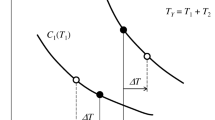Abstract
We propose a methodology in this study for the analysis and the optimization of assembly tolerances. A combination of three components, it involves the use of 3D CAT software, a table referred to as a “dimensional hierarchization matrix” and a tolerance optimization algorithm. The Antolin Group, a Spanish multinational in the automobile components sector, employs this system to optimize tolerance values and to reduce manufacturing costs. The matrix was designed to enable easy identification, in a single table, of all requirements that fail to meet the specifications in the different approximations, prior to the definition of the dimensional and the geometric tolerances that comply with the functional requirements, and to identify which tolerances contribute most to variations in all of the functional conditions of the mechanism. Through its different iterations, this matrix allows us to see which of the tolerances should first be modified to optimize the design requirement specifications. A tolerance optimization algorithm was also defined, which functions with the data from the dimensional hierarchization matrix.
Similar content being viewed by others
References
Shah JJ, Ameta G, Shen Z, Davidson J (2007) Navigating the tolerance analysis maze. Comput Aided Des Appl 4(5):705–718
Wu F, Dantan J-Y, Etienne A, Siadat A, Martin P (2009) Improved algorithm for tolerance allocation based on Monte Carlo simulation and discrete optimization. Comput Ind Eng 56(4):1402–1413
Cai W (2008) A new tolerance modeling and analysis methodology through a two-step linearization with applications in automotive body assembly. J Manuf Syst 27:26–35
Governi L, Furferi R, Volpe Y (2012) A genetic algorithms-based procedure for automatic tolerance allocation integrated in a commercial variation analysis software. J Artif Intell 5(3):99–112
Chase KW, Greenwood WH (1988) Design issues in mechanical tolerance analysis. ADCATS Report No. 87–5. Reprinted from Manufacturing Review, ASME, vol 1, no 1, pp 50–59
Gao J, Chase KW, Magleby SP (1995) Comparison of assembly tolerance analysis by the direct linearization and modified Monte Carlo simulation methods. Proceedings of the ASME Design Engineering Technical Conferences Boston, MA, vol. 1, pp 350–360
Cvetko R, Chase KW, Magleby SP (1998) New metrics for evaluating Monte Carlo tolerance analysis of assemblies. Proceedings of the ASME International Mechanical Engineering Conference and Exposition. Mechanical Engineering Department Brigham Young University, Provo
Kane VE (1986) Process capability indices. J Qual Technol 18(1):41–52
American Society of Mechanical Engineers. ASME Y14.5M-2009. Dimensioning and Tolerancing. New York
ISO, International Organization for Standardization ISO 1101:2004. Geometrical Product Specifications (GPS). Geometrical tolerancing. Tolerances of form, orientation, location and run-out
Lu C, Fuh JYH, Wong YS (2006) Evaluation of product assemblability in different assembly sequences using the tolerancing approach. Int J Prod Res 44(23):5037–5063
Ramos B, Cristóbal A, Melgosa C (2015) Validation of a tolerance analysis simulation procedure in assemblies. Int J Adv Manuf Technol 76:1297–1310
Polini W (2012) Taxonomy of models for tolerance analysis in assembling. Int J Prod Res 50(7):2014–2029
Islam MN (2004) Functional dimensioning and tolerancing software for concurrent engineering applications. Comput Ind 54:169–190
Swift KG, Booker JD (2003) Process selection. From design to manufacture. Editorial: Butterworth Heinemann, 2nd edn. 316pp. Oxford
ISO 2768–1:1989 General tolerance. Part 1: tolerances for linear and angular dimensions without individual tolerance indications
ISO 2768–2:1989 General tolerance. Part 2: geometrical tolerances for feature without individual tolerance indications
ISO 8062–3:2007. Geometrical Product Specifications (GPS). Dimensional and geometrical tolerances for moulded parts. Part 3: general dimensional and geometrical tolerances a machining allowance for casting
Ngoi BKA, Lim LEN, Ong AS, Lim BH (1999) Applying the coordinate tolerance system to tolerance stack analysis involving position tolerance. Int J Adv Manuf Technol 15(6):404–408
Shen Z, Shah JJ, Davidson JK (2008) Automatic generation of min/max tolerance charts for tolerance analysis from CAD models. Int J Comput Integr Manuf 21(8):869–884
Author information
Authors and Affiliations
Corresponding author
Rights and permissions
About this article
Cite this article
Ramos Barbero, B., Pérez Azcona, J. & González Pérez, J. A tolerance analysis and optimization methodology. The combined use of 3D CAT, a dimensional hierarchization matrix and an optimization algorithm. Int J Adv Manuf Technol 81, 371–385 (2015). https://doi.org/10.1007/s00170-015-7068-4
Received:
Accepted:
Published:
Issue Date:
DOI: https://doi.org/10.1007/s00170-015-7068-4




